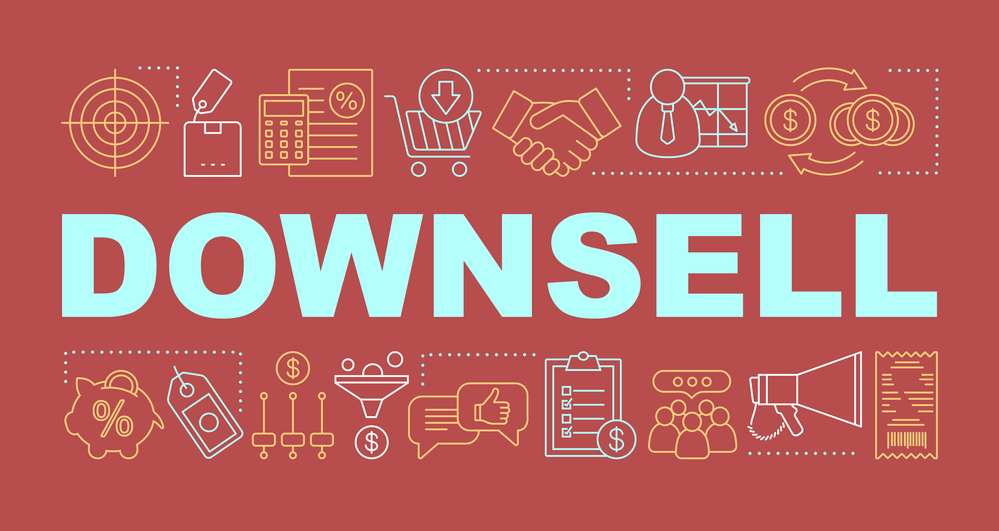
Black Friday Blueprint: Design Discounts That Convert
Oct 11, 2023 4 minutes
As the holiday shopping season approaches, businesses worldwide brace themselves for one of the most anticipated commercial events of the year: Black Friday.
This day is synonymous with enticing discounts and unparalleled deals, drawing millions of eager shoppers to both online and physical stores. The widespread expectation for substantial discounts puts pressure on businesses to slash prices, often leading them to hastily offer reductions without a well-devised strategy.
However, successful Black Friday marketing ideas and discount practices require a nuanced understanding of your customer base (from loyal customers to newbies) and a meticulous Black Friday marketing strategy.
Merely offering discounts is NOT a surefire way to guarantee sales. Not all potential customers are swayed solely by price reductions. In fact, customers can be broadly categorized into different segments, each with unique buying behaviors and motivations.
A significant mistake many businesses make is indiscriminately offering discounts without considering these distinct customer groups. They miss out on maximizing their sales potential by failing to address the specific needs and concerns of each segment.
Understanding that most new customers aren’t outright rejecting your offerings—but are instead saying “not now”—is crucial. On a typical day, approximately 3% of customers are instant buyers who require no additional convincing.
Conversely, around 15-25% will never make a purchase, as your products or services do not align with their needs or interests. The majority of customers fall somewhere in between these extremes, and it’s this segment that ecommerce business owners need to skillfully navigate to effectively boost their sales.
Understanding the 3 Main Customer Segments
Let’s break down these customer segments so you can better target your sales approach according to their buying habits, needs, and wants. Even within your own target audience, there are subgroups depending on habit. This is what we’re diving into today.
Instant Buyers (3%)
Instant buyers are an online retailer’s dream, making up approximately 3% of the consumer base. These individuals require minimal persuasion, as they often have a clear understanding of what they want and are ready to make immediate purchases.
Instant buyers are typically motivated by an existing need or desire and possess a proactive approach to acquisition.
Given their readiness to purchase, it is crucial to facilitate a seamless and swift transaction process for instant buyers. Ensure that the purchasing platform, whether online or in-store, is user-friendly and efficient. Offering expedited shipping options and hassle-free returns can also be appealing to this segment.
Never-Buyers (15-25%)
Never-buyers comprise 15-25% of the customer base and exhibit a strong disinterest in your products or services. They are not your target market, often because their needs do not align with what you offer, or they might be loyal to another brand.
Attempting to convert never-buyers is usually an exercise in futility and a misallocation of resources. These individuals are unlikely to be swayed by discounts or marketing campaigns, and even if they do make a purchase, they may not be repeat customers or brand advocates.
In-Between Buyers
The majority of customers fall into the in-between category, displaying varying levels of interest and intent to purchase. This segment is diverse, including those who are indecisive, cautious, skeptical, or facing barriers like financial constraints.
Understanding the nuances of each subgroup within the in-between buyers is imperative for crafting tailored marketing and discount strategies. In the sections that follow, we will dissect the characteristics and motivations of each type of in-between buyer, providing valuable insights into effectively engaging and converting them.
In-Depth on the In-Between Buyers
This is the largest group of shoppers, and these are the ones your promotion ideas and discounts need to target best. With today’s marketing automation capabilities in anything from email marketing to SMS, you can easily create a marketing plan for each type of shopper. The setup will take effort, but it can be used for yearly Black Friday or Cyber Monday marketing as well as everyday sales.
“Not Now” Buyers
These buyers are potential future customers who aren’t ready to purchase immediately. The timing might not be right for them due to various personal reasons.
For these buyers, it’s crucial to keep the communication lines open. Engage them with newsletters, updates, and occasional discounts to gently nudge them towards conversion when they are ready.
“Stay in Contact” Buyers
They express interest but are non-committal. These buyers often need a bit more convincing and nurturing before making a decision.
Invest in building a relationship through consistent, value-driven communication. Customer testimonials and success stories can be influential for this segment.
“No Time Right Now” Buyers
These buyers are typically busy and might feel overwhelmed. They might want your product but keep postponing the decision.
Simplify the purchasing process and provide clear, concise information about your product’s value. Time-limited discounts, free gifts, and countdown timers on the landing page or cart can also create a sense of urgency.
“Pain isn’t Urgent” Buyers
They acknowledge the problem but don’t see it as immediate or severe. These buyers need to understand the cost of inaction.
Emphasize the implications of not addressing the issue now and highlight the benefits and relief your product offers.
“Skeptical” Buyers
These buyers doubt the efficacy of your product or service. They need additional proof to believe in your value proposition.
Offer social proof, customer reviews, and testimonials. Money-back guarantees or free trials can also mitigate risk and build trust.
“Need More Information” Buyers
They require more details to be convinced that your product is the right fit for their unique needs or situation.
Provide comprehensive information, FAQs, and responsive customer service to answer queries and address concerns.
“Lack Self-Belief” Buyers
These buyers believe in the product but doubt their ability to use it effectively. They need assurance and guidance.
Offer support, training, and resources that empower them to use the product confidently.
“Financial Constraint” Buyers
Buyers in this category are interested but are held back by their financial situation.
Introduce flexible payment plans, financing options, or limited-time discounts to ease their financial burden and encourage purchase. It is a great idea to build a Black Friday email list for this type of shopper to provide them with unique Black Friday promotions, discount codes, and other offers alongside promoting alternative ways to pay.
Using an email list for this group is particularly helpful as you can monitor the open rate and click through rate to see what items within your email campaigns work and which ones don’t to better boost sales within a group that wants your product, sees the value, but can’t afford it.
Strategies to Convert In-Between Buyers
1. Offering Information and Value – For buyers who are on the fence, providing additional information can be crucial. Detailed product descriptions, engaging product videos, and insightful user guides can help clarify any uncertainties they might have. Always highlight the unique value proposition of your products to showcase how they stand out in the market.
2. Building Perceived Value and Selling Outcomes – Demonstrating the perceived value of your product is vital. Buyers should not only understand the features of the product but also realize how it can positively impact their lives. Focus on the outcomes and benefits that customers will experience, using engaging storytelling and real-life examples to paint a vivid picture.
3. Providing Social Proof and Testimonials – Social proof, such as customer testimonials, reviews, and social media posts (TikTok, Facebook, Twitter), can significantly influence undecided buyers. Positive feedback from previous customers can alleviate doubts and help potential buyers visualize the value they will receive.
4. Simplifying Processes for Skeptical Buyers – Skeptical buyers often need reassurance and straightforward solutions. Offering step-by-step guides, dedicated customer support, and easy returns can simplify the buying process and make it less daunting for them.
5. Financial Objection Reversal Tactics – For buyers hesitant due to financial constraints, it’s essential to highlight the cost of inaction or the potential loss they might incur without your product. Present your products as investments rather than expenses, and consider offering value-based pricing, bundles, or payment plans to enhance affordability.
Discounting Dynamics
Jumping directly to discounts might seem like a tempting strategy, but it often results in lower conversion rates. By immediately offering discounts, ecommerce retailers might capture a small segment of price-sensitive buyers but miss out on effectively communicating value to others who require more than just a lower price to be convinced.
Immediate discounting attracts a customer base that is primarily driven by price rather than value. These customers are more likely to return products, switch brands for better Black Friday offers, and less likely to develop loyalty to your brand, ultimately hurting your small business’s long-term profitability and reputation.
Strategic Use of Discounts
1. Last-Resort Discounting – Discounts should not be the first tool you use but rather a last resort. After addressing customers’ concerns, providing value, and building trust, then consider introducing discounts if necessary—even as a popup at checkout to avoid cart abandonment. This approach ensures you’re not undermining your products’ perceived value or solely competing on price.
2. Building Value Before Discounting – Before offering discounts, it’s essential to build and communicate the inherent value of your products. Customers should perceive your offerings as worth the original price. Once the value is established, discounts appear more attractive, and buyers feel they’re getting a genuine deal.
3. Using Discounts Judiciously to Maximize Conversion – Instead of blanket discounts, offer strategic, time-limited promotions targeting specific buyer groups. Consider bundling new products (also through cross-sells and upsells), providing loyalty program points, or offering exclusive deals, early access, giveaways, and sneak peeks to repeat customers. Such measures not only stimulate sales but also enhance customer retention and brand affinity.
Black Friday Special Section
Black Friday shopping enthusiasts are on high alert for deals and discounts. Expectations are high, and the market is saturated with physical and online stores vying for customer attention with various offers. Understanding that discounts are anticipated, it’s crucial to approach your discount strategy mindfully, considering the distinct customer segments discussed earlier.
Since shoppers expect initial discounts during Black Friday, offer compelling deals that not only attract customers but also communicate value. Start with moderate discounts and focus on bundling options, limited-time offers, or exclusive products that are only available during this period.
This approach encourages shoppers to engage with your brand without immediately resorting to deep discounts.
After presenting your initial Black Friday deals, monitor customer behavior and sales closely. For shoppers who express interest but hesitate to purchase:
- Engage with Value: Before introducing further discounts, engage these customers with value propositions, testimonials, and social proof to address their reservations.
- Sequential Discounts: If necessary, introduce additional, time-sensitive coupons as the sale period progresses. These can create urgency and tip the scales for hesitant shoppers.
- Last-Minute Deals: Towards the end of the Black Friday sale, consider offering last-minute deals and flash sales to capture late buyers. Ensure these deals are still aligned with your overall discounting strategy and don’t undervalue your products.
Conclusion
The intricacies of discounting is especially pivotal on the big day. With a deluge of eager shoppers and a competitive marketplace, knowing when and how to offer discounts is key to not just attracting customers, but also converting them successfully while safeguarding your brand’s perceived value and integrity.
Understanding the various customer segments—from the instant buyers to the never-buyers, and the diverse in-between buyers—is the foundation for crafting a robust and effective discount strategy. Each segment requires a distinct approach, with carefully considered offers and incentives designed to address their specific needs, concerns, and buying behaviors.
In the process, we must avoid the pitfalls of immediate and indiscriminate discounting, which not only yields lower conversion rates but also attracts the wrong type of customer: the one that is here for a transaction, not a relationship. Strategic discounting, on the other hand, is thoughtful, value-driven, and customer-centric, ensuring that discounts are offered as a last resort, not a first impulse.
As you venture into the frenetic and opportunity-laden Black Friday season, consider bolstering your business’s capability to handle various transactions securely and efficiently. For ecommerce stores, a reliable and resilient merchant account is indispensable.
Navigate this Black Friday with confidence, strategic discounts, and the robust support of DirectPayNet’s high-risk merchant accounts. Let’s maximize your holiday sales and optimize your transactions during one of the most lucrative retail events of the year.




